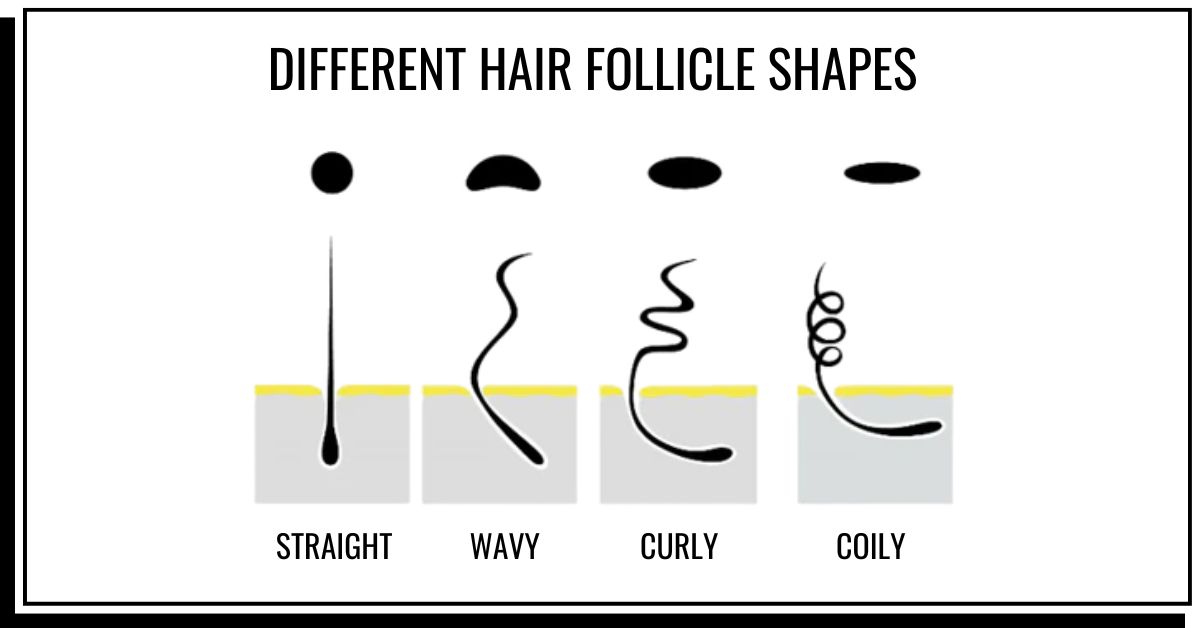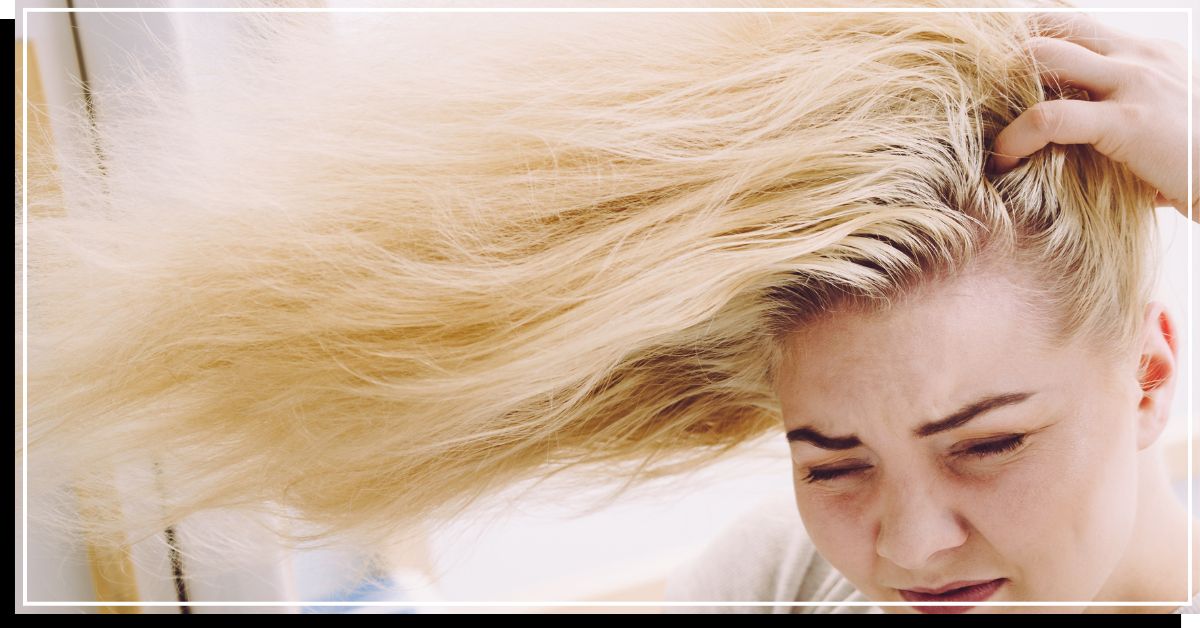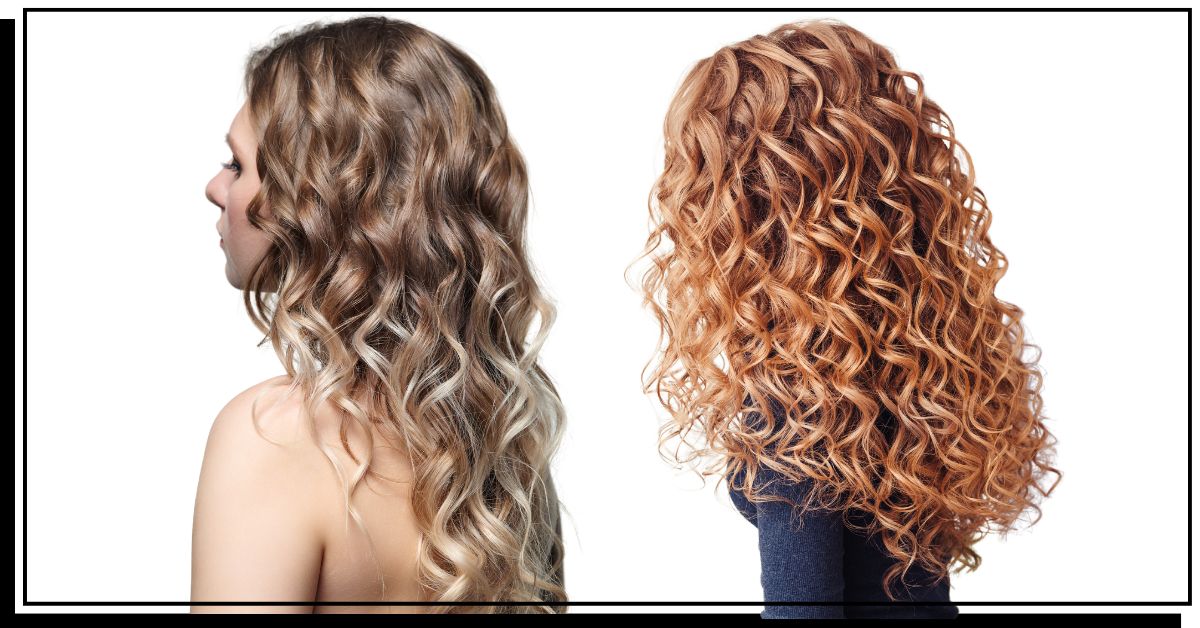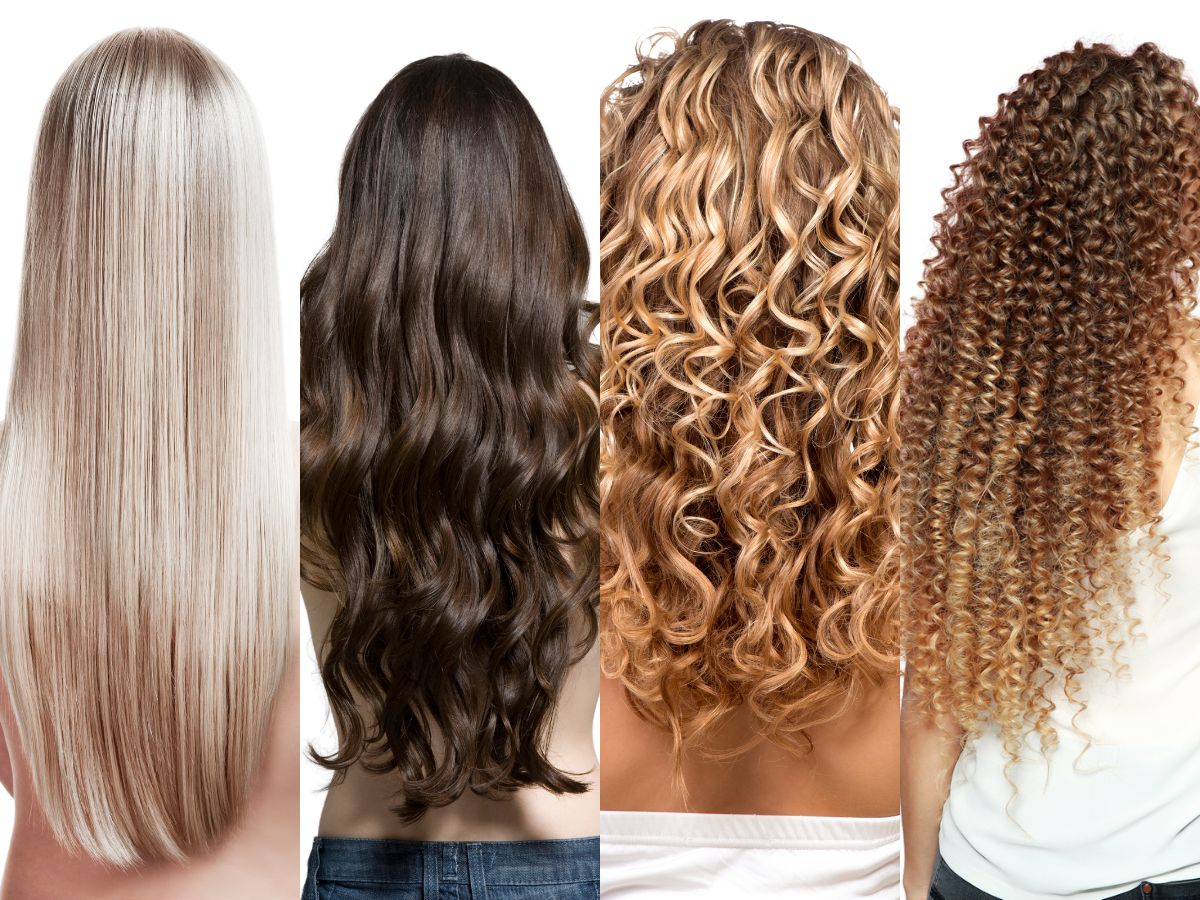Reader question:
Hi Cindy, I’ve been experimenting with my hair care routine but can’t seem to nail it down—my locks just won’t cooperate! I’ve got this unique mix of waves that can spiral on a humid day but fall flat by nightfall. How can I determine my true hair type, so I can finally find products that cater to its mood swings?
Gina McDowell
North Charleston, SC
Hi Gina, in order to maintain the health and appearance of your hair, it’s crucial to know your hair type, which can fall into four main categories: straight, wavy, curly, and coiled. Here, I’ll explain the process of how to best determine your hair type and also give you some visual examples so you can easily determine yours.
Each of these categories has unique characteristics and requires special care. Additionally, within each category, there are various subtypes and textures that further define the nature of your hair. By identifying your hair type, you can determine specific hairstyling methods, products, and preventive measures designed for your hair’s specific needs and ultimately achieve healthier, more manageable locks.
Key Takeaways
- Understanding your hair type helps in choosing appropriate products and styling techniques.
- Hair types fall into four main categories: straight, wavy, curly, and coiled.
- Identifying your unique hair type helps you ensure healthier, more manageable hair.
Understanding Hair Types
Andre Walker Hair Typing System
To determine your hair type, you can start by using the Andre Walker Hair Typing System, which categories hair into four main types and further subcategories. In this system, Type 1 represents straight hair with no natural curl, while Types 2, 3, and 4 describe varying degrees of wave, curl, and coils.
Type 1 Hair
- Type 1A: Fine and thin straight hair with no visible wave or curl.
- Type 1B: Medium-textured straight hair with slight body or bend.
- Type 1C: Coarse and thick straight hair with some resistance to curling.
Type 2 Hair (Wavy)
- Type 2A: Slight natural wave with fine and thin texture; easily straightened. Forms a loose “S” pattern.
- Type 2B: Medium-textured wavy hair that forms a defined S-shape, a bit resistant to styling.
- Type 2C: Coarse, thick wavy hair with wider waves, tends to be frizzy and some resistance to styling.
Type 3 Hair (Curly)
- Type 3A: Loose, large curls that form a definite S-shape pattern.
- Type 3B: Medium, springy curls with a more pronounced S-shape.
- Type 3C: Tight, corkscrew curls with a high density and a lot of volume.
Type 4 Hair (Coils)
- Type 4A: Tightly coiled hair that forms an O-shaped pattern.
- Type 4B: More zigzag-shaped coils with a less defined kink pattern compared to Type 4A.
- Type 4C: Tightly packed and dense coils with almost no visible defined Z like pattern. Has more of a very tight “O” shaped pattern.
Other Hair Typing Systems
There are other hair typing systems that focus on different aspects of hair, such as texture, density, and porosity. For example, some systems classify hair into three categories: fine, medium, and coarse, while others take scalp health and hair follicle shape into consideration.
To identify your hair type accurately, it may be helpful to use a combination of systems and pay attention to your hair’s natural characteristics when it’s not chemically treated or heat-styled. Understanding your hair type helps you choose the most suitable products and care routines for your unique hair needs.
Key Factors in Determining Hair Type
Diameter and Thickness
The diameter of your individual hair strands and the overall thickness of your hair are crucial factors in determining your hair type. Fine, medium, and coarse are the three classifications for hair diameter. Examine a single strand of your hair and compare it to a thread as a gauge. Fine hair is thinner than the thread, medium hair is similar in width, and coarse hair is thicker. Thickness refers to the density of hair on your scalp, which can range from thin to thick. You can assess this by gathering your hair into a ponytail and measuring its circumference.
Hair Follicle Shape

The shape of your hair follicle plays a significant role in determining your hair type. Straight hair typically has round and symmetrical follicles, while curly and coily hair has oval-shaped or flat oval-shaped follicles. The more curved the follicle, the curlier your hair will be. To get a better understanding of your hair follicle shape, analyze the shape and structure of individual strands.
Texture and Curl Pattern
Your hair’s texture and curl pattern also contribute to your hair type. Hair texture can be classified as fine, medium, or coarse, and your curl pattern can range from straight to wavy, curly, or coily. A hair type chart can help you identify your specific curl pattern. Take a close look at your hair when it’s freshly washed and air-dried to analyze its natural texture and curl pattern.
Porosity
The porosity of your hair indicates how well it can absorb and retain moisture. Low porosity means that your hair has tightly closed cuticles which makes it more challenging for moisture to penetrate the hair shaft. High porosity hair, on the other hand, has more open cuticles, allowing moisture to easily enter and exit the hair shaft. This factor is vital in determining the appropriate hair care and styling products for your hair type. To test your hair’s porosity, do a simple float test by placing a clean hair strand in a glass of water. If it sinks quickly, your hair has high porosity; if it floats, your hair has low porosity.
Caring for Different Hair Types
Haircare and Hydration
To keep your hair healthy and nourished, it’s essential to develop a haircare routine that includes proper hydration. Knowing your hair type is crucial, as it helps you choose the right products for straight, wavy, curly, or coily/kinky hair.

For all hair types, regular moisturizing is vital. Use leave-in conditioners, oils, or creams to ensure your hair stays hydrated. For example:
- Straight hair: Opt for lightweight products such as water-based mousse or spray.
- Wavy hair: Apply leave-in conditioners and creams to maintain moisture and enhance natural waves.
- Curly hair: Use a combination of creams and gels to lock in moisture and define curls.
- Coily/Kinky hair: Choose heavy creams and butters to keep your curls and coils well moisturized.
Managing Frizz and Breakage
Different hair types have distinct needs when it comes to managing frizz and preventing breakage. It’s important to tailor your haircare routine accordingly:
- Straight hair: Use lightweight styling products and avoid over-washing your hair to prevent dryness and frizz.
- Wavy hair: Focus on moisture retention and use a gentle shampoo to avoid stripping natural oils. Comb or brush your hair when it’s wet to minimize breakage.
- Curly hair: Regular deep conditioning treatments and using a wide-tooth comb will help reduce frizz and breakage.
- Coily/Kinky hair: To maintain moisture and minimize breakage, use heavy creams and deep condition frequently. Avoid using heat styling tools as they can cause dryness and damage.
Remember that proper haircare is critical for maintaining healthy, manageable, and beautiful hair. Staying consistent with your routine and adapting to your hair type will help you achieve the best results and keep your locks looking fabulous.
Common Hair Type Combinations and Solutions

Combination Hair Type Challenges
Combination hair types can be challenging to manage, as they often combine elements from different hair types. For example, you might have straight hair at the roots and curly hair at the ends, or oily scalp with dry hair strands. This can make it difficult to find hair care products and styling methods that suit all parts of your hair.
One of the most common combination hair types is having a fine and oily scalp with dry and damaged ends. This can occur due to using harsh hair care products, excessive heat styling, or environmental factors like sun exposure and chlorine from swimming pools.
Tips for Managing Combination Hair
To manage your combination hair type effectively, it’s essential to understand your specific hair needs and address them accordingly. Here are some tips for different combination hair type scenarios:
Fine, Oily Scalp with Dry, Damaged Ends:
- Use a daily leave in thermal spray to protect and moisturize your fine hair.
- Apply a moisturizing conditioner focused on the dry and damaged ends to provide the necessary hydration without causing your scalp to become too greasy.
- Avoid using heavy oils and leave-in products on the scalp, as this can exacerbate oiliness.
Straight Roots with Curly Ends:
- Use hair products specifically designed for curl enhancing without weighing down your roots.
- Use a diffuser attachment when blow-drying your hair to define and control your curls.
- Experiment with different styling techniques, such as braiding or twisting your hair, to help blend the varying textures of your hair seamlessly.
Curly Hair with Straight, Damaged Ends:
- Use a deep conditioning treatment regularly to provide the necessary hydration and restore the natural curl pattern in the damaged sections.
- Limit heat styling and chemical treatments, as they can further damage your hair.
- Consider getting a haircut to remove the damaged, straight ends and help create a more uniform curl pattern throughout your hair.
By following these tips and taking the time to understand your unique hair type combination, you’re well on your way to finding the best solutions for managing and truly embracing your beautiful, multifaceted locks.
Styling and Care Tips for Each Hair Type

Straight Hair
For straight hair, it is essential to maintain a healthy balance of moisture and volume. Use lightweight shampoos and conditioners to avoid weighing down your hair. When styling, opt for a heat protectant and use a flat iron or blow dryer on a low setting to minimize damage. To add volume, consider using a volumizing mousse or root lift spray at the base of your hair.
Wavy Hair
Wavy hair can be more prone to frizz, so it’s important to keep it moisturized. Use a gentle, sulfate-free shampoo and a moisturizing conditioner to maintain the natural oils that your hair needs. When styling, apply a light hold curl-enhancing cream or gel to damp hair, then use a diffuser attachment on your blow dryer or air dry. This will help to define your waves and reduce frizz.
Curly Hair
For curly hair, maintaining moisture is crucial to prevent frizz and breakage. Use a sulfate-free shampoo and a hydrating conditioner or hair mask regularly. When styling, apply a leave-in conditioner or curl-defining cream to damp hair, then use a wide-tooth comb or your fingers to detangle. Dry your hair using a diffuser or let it air dry naturally to preserve the curl pattern and avoid frizz. Embrace your hair’s natural corkscrew shape by avoiding excessive manipulation.
Coily Hair
Coily hair consists of tight coils and requires special care to maintain its health and prevent breakage. Use a hydrating, sulfate-free shampoo and a deep conditioner or hair mask to ensure your hair is well-moisturized. Incorporate regular protein treatments into your hair care routine to strengthen and maintain elasticity.
When styling, section your hair and use a wide-tooth comb or detangling brush to avoid breakage. Apply a leave-in conditioner followed by a curl-defining cream or gel to hold your tight coils in place. To keep your hair healthy, consider protective styling such as braids or twists, and limit the use of heat styling tools.
Frequently Asked Questions
How to determine hair type?
To determine your hair type, you can start by examining the texture, thickness, and shape of your hair. Take a hair type quiz to get a better understanding of your hair’s unique characteristics. Another method is the mirror test, which helps to determine your hair density by examining the number of individual strands on your scalp. Understanding your hair type will help you find the most suitable products and styling methods for your hair.
Which hair types are rare?
While hair types vary across individuals, some hair types are less common than others. For example, Type 1C (straight hair with a coarse texture) and Type 4C (very tightly coiled hair with minimal definition) are considered relatively rare compared to other hair types. However, it’s crucial to remember that your hair is uniquely yours, and what is rare for one person may be more common for someone else.
Differences between 2A and 2B hair?

Both Type 2A and 2B hair are considered wavy, but they have some differences in their texture and curl pattern. Type 2A hair usually has a loose “S” shape, is thin and fine, and can be easily straightened or curled. On the other hand, Type 2B hair has more defined “S” shaped curls, is somewhat resistant to styling, and tends to have more body and frizz than Type 2A hair. Knowing the differences between these two hair types can help you choose the right products and styling techniques to enhance your natural waves.
Is hair type related to ethnicity?
Hair type can be influenced by ethnicity, as genetic factors often play a role in determining hair texture, curl pattern, and density. However, it is essential to note that there is significant diversity within ethnic groups, and your hair type may not necessarily align with the typical hair characteristics associated with your ethnicity. Moreover, other factors such as environment, hair care habits, and health can also influence your hair type. Embrace and celebrate the unique aspects of your hair, regardless of your ethnic background.
